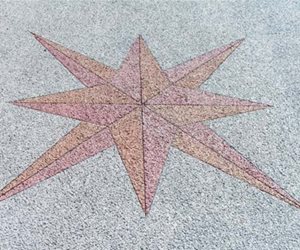Paving for a Desert Garden
Get ideas for paving a desert patioPervious concrete is an excellent patio paving option for a desert garden. Pervious concrete has a porous, open-cell structure that allows water to pass through. Instead of pooling on the surface or running off into drains, storm water is channeled directly to the soil, providing water for tree roots and landscaping, so there is less need for irrigation. Additionally, pervious concrete's open-cell structure absorbs and stores less heat than other paving options.
Decorative appeal can be added to pervious concrete in a number of ways. Natural stone can be embedded as borders, different colored aggregates can be used, and specialty designs can even be created. Multiple colors of pervious concrete can be used on the same job to create a two-tone effect, or bands of traditional colored concrete can be used to add decorative flair. Some contractors have even stained pervious concrete.
Another paving option that is well suited for desert gardens is concrete pavers. Concrete pavers work especially well for pathways. Place the pavers in a bed of river rock or gravel as if they were stepping stones. This also allows for a good amount of water drainage. Additionally, many other paving materials, such as flagstone or brick, can be installed in a way that allows water to filter back into the soil. This is refered to as permeable paving.
When paving a desert garden it is incredibly important to select appropriate colors. Lighter colors will be better because they reflect light, keeping the patio surface and surrounding areas cooler. This includes earth tones, tans, light browns and grays. Avoid dark colors that will absorb the hot desert sun and make your garden even warmer.

 Backyards
Backyards
 Front Yards
Front Yards



